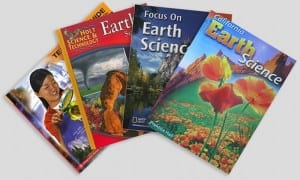Books voice doubt over whether climate change is real and suggest global warming could be beneficial, researchers say in analysis of four science texts
The Guardian has covered the research of SMU teaching expert Diego Román co-author of a new study on California 6th grade science textbooks and how they frame the subject of climate change.
Studies estimate that only 3 percent of scientists who are experts in climate analysis disagree about the role of humans in the causes of climate change. And the most recent report from the Intergovernmental Panel on Climate Change — the evidence of 600 climate researchers in 32 countries reporting changes to Earth’s atmosphere, ice and seas — in 2013 stated “human influence on the climate system is clear.”
Yet only 54 percent of American teens believe climate change is happening, 43 percent don’t believe it’s caused by humans, and 57 percent aren’t concerned about it.
The new study measured how four sixth-grade science textbooks adopted for use in California frame the subject of global warming. Sixth grade is the first time California state standards indicate students will encounter climate change in their formal science curriculum.
“We found that climate change is presented as a controversial debate stemming from differing opinions,” said Román, an assistant professor in the Department of Teaching and Learning in the SMU Annette Caldwell Simmons School of Education and Human Development. “Climate skeptics and climate deniers are given equal time and treated with equal weight as scientists and scientific facts — even though scientists who refute global warming total a miniscule number.”
Co-author on the article is K.C. Busch, a Ph.D. candidate in science education in Stanford University’s Graduate School of Education.
The findings were reported in October 2015 at the 11th Conference of the European Science Education Research Association (ESERA), held in Helsinki, Finland.
The findings were also published in the Environmental Education Research journal in the article, “Textbooks of doubt: Using systemic functional analysis to explore the framing of climate change in middle-school science textbooks.”
The Guardian article published Nov. 23, 2015.
EXCERPT:
By Oliver Milman
The Guardian
Textbooks in California public schools are misleading students on climate change, with material that expresses doubt over whether it is real and promotes the view that increasing temperatures may be beneficial, according to a Stanford University study.An analysis of four key science texts given to sixth-grade students in California showed that the books “framed climate change as uncertain in the scientific community – both about whether it is occurring as well as about its human-causation”.
Researchers studied 2,770 words used in the books, which are given to students as their first introduction to climate science, and found that the widely accepted opinion that the climate is changing and that humans are the main cause wasn’t represented in the books.
Whereas California science textbooks on other subjects list facts, the books focused on climate change use conditional words like “could”, “might” or “may” throughout. Three of the textbooks are called Focus on Earth Science, published separately by Prentice Hall, Glencoe-McGraw-Hill and CPO Science. The fourth is called Earth Science, published by Holt, Rinehart & Winston.
The Prentice Hall book, first published in 2008, states: “Not all scientists agree about the causes of global warming. Some scientists think that the 0.7C degree rise in global temperatures over the past 120 years may be due in part to natural variations in climate.”
The same book stresses that climate change “could have some positive effects”.
“Farmers in some areas that are now cool could plant two crops a year instead of one,” it reads. “Places that are too cold for farming today could become farmland. However, many effects of global warming are likely to be less positive.”
Meanwhile, Earth Science has a passage that reads: “Until recently, climatic changes were connected only to natural causes. However, studies indicate that human activities may have an influence on climate change.”
The Stanford University study concludes that the language used in the textbooks is likely to promote doubt over the science of climate change and dampen any sense of urgency in dealing with the issue.

